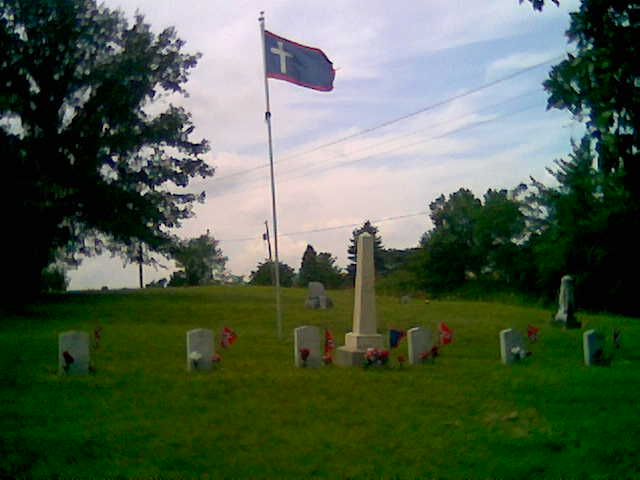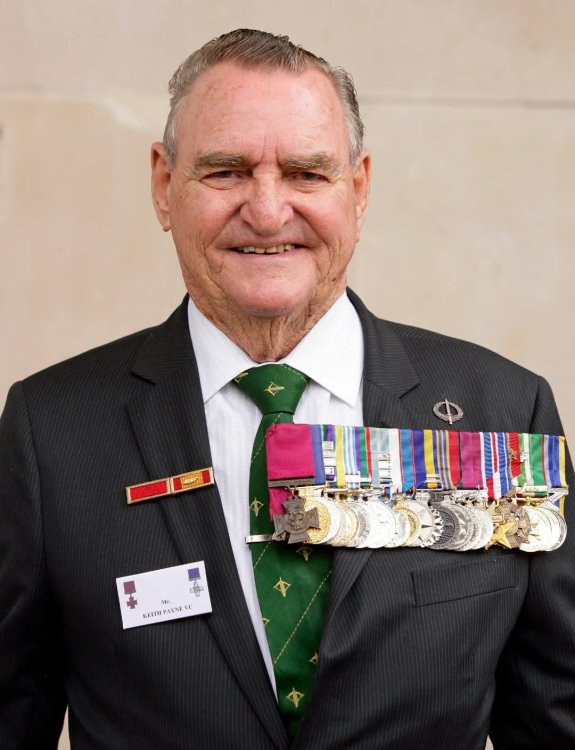-
Posts
53,502 -
Joined
-
Last visited
-
Days Won
631
Content Type
Profiles
Forums
Events
Posts posted by Subdeacon Joe
-
-
-
-
Looks like a beast.
-
 1
1
-
-
A song that I think is appropriate for the day.
-
 1
1
-
-
Into my late 30s or early 40s I would iron my "good shirts" but not my work shirts. Those just got hung up right out of the dryer.
In college when in the dorms I did laundry once a week and had 8 to 10 shirts to iron. Taught several of the young ladies both how to do their laundry and how to iron.
I was also sewing- square dance dresses for my girlfriend, and SCA clothes for both of us, so I got pretty good with an iron.
50 minutes ago, Sedalia Dave said:Welcome to Cowboy Action where the men discuss period clothing and the Ladies discuss firearms. 😉
What was the associated site/page/group that was mostly about needle and fabric arts?
-
 1
1
-
-
Thanks! One little thing I do for receipts that I save is to put the ingredients in two columns, and directions in single. Also, in one like this the has two separate sections I'll leave the main part in regular font, then put the others in Italic, then Bold or Underlined if there is a third, and so on,. Same for the instructions for each part. I find it make it easier for me to keep things straight. I can't do the double columns here, but for the fonts:
32 minutes ago, Sedalia Dave said:Ingredients:
For the Brownies:
2 eggs
3 bananas, mashed
1 1/2 cups sugar
1 cup sour cream
1/2 cup butter, softened
2 teaspoons vanilla extract
2 cups all-purpose flour
1 teaspoon baking soda
3/4 teaspoon salt
1/2 cup walnuts, chopped
For the Frosting:
1/2 cup butter
3 cups powdered sugar
1 1/2 teaspoons vanilla extract
3 tablespoons milk
Directions:
Preheat oven to 375°F (190°C). Grease a 13 x 9 inch baking pan.
In a large bowl, beat together sugar, sour cream, butter, and eggs until creamy.
Blend in the mashed bananas and vanilla extract.
Add flour, baking soda, and salt. Blend for 1 minute. Stir in chopped walnuts.
Spread batter evenly into the greased pan. Bake for 25 minutes or until golden brown.
Allow brownies to cool slightly until warm (but not hot) before frosting.
For the Frosting:
In a large saucepan, heat butter over medium heat until it turns a medium brown color. Watch carefully.
Remove from heat, whisk in powdered sugar, adding milk gradually to achieve a smooth, spreadable consistency. Stir in vanilla.
-
 1
1
-
-
3 hours ago, Calamity Kris said:
Maybe she was the spokes person for the family and was speaking in the collective sense? Either way, welcome home sir.
3 hours ago, Rip Snorter said:Another thought, a years long family conversation - part of her growing up.
My wife said much the same. I guess I just have a narrower view of "closure." I see it as healing, or starting to heal, a deep emotional hurt from when someone you were very close to went missing.
-
-
On this day, 56 years ago, on May 24, 1969, Warrant Officer Class II Keith Payne, 35 years old, was commanding the 212th Company of the 1st Mobile Strike Force Battalion near Ben Het Camp in Kontum Province, South Vietnam. His unit, part of the Australian Army Training Team Vietnam (AATTV), was conducting a search-and-clear operation in the highlands near the Cambodian border. The area was contested by large and well-equipped North Vietnamese Army (NVA) forces who had been maneuvering through the jungle to cut off allied positions and strike remote outposts.
That afternoon, Payne’s battalion came under a large-scale coordinated assault from an estimated battalion-sized NVA force. The attack came from three sides and was supported by heavy rocket and mortar fire. The intensity and surprise of the assault quickly overwhelmed the forward elements of the battalion. The NVA aimed to encircle and destroy the entire force in the field. The battalion commander was seriously wounded, and the two forward companies became isolated. Payne’s unit was one of them.
As the situation collapsed around him, Payne immediately took control. He moved across open terrain under direct fire from small arms, rockets, and automatic weapons. Bullets kicked up dirt around him as he sprinted between fighting positions. He shouted orders, fired his rifle, and threw grenades to push back enemy assaults that were breaking into the company’s perimeter. During this action, Payne was wounded in his hands and arms by fragments and bullets, but he remained on his feet.
He personally covered the withdrawal of the battalion headquarters group, including the battalion commander, several American advisors, and a small number of remaining troops. Once they had pulled back, Payne turned his attention to the rest of his men. He crossed the fire-swept clearing again, alone, to reach the surviving elements of his company who had become separated and disorganized.
Payne regrouped scattered soldiers under heavy fire and formed them into a new defensive perimeter. Many of them were Montagnard troops, indigenous soldiers who had lost contact with their leaders. Payne steadied them, redistributed weapons and ammunition, and got them firing again. By nightfall, he had restored a fragile defensive line and bought time.
Once darkness fell, Payne set out alone into enemy territory. The jungle was full of scattered wounded. Some had crawled away to hide. Others had been left behind in the confusion. Payne moved through the dark, avoiding enemy patrols and positions, listening for voices or groans. When he found wounded men, he treated what he could and carried several of them himself, one by one, back to the temporary perimeter. He kept moving for three hours, searching and rescuing, repeatedly risking ambush or capture.
When he finally returned to the perimeter, he learned that the rest of the battalion had withdrawn further back toward the base. Leading the group of wounded and exhausted men he had assembled, Payne guided them through more enemy territory and brought them safely to friendly lines.
He had saved the lives of approximately 40 soldiers, most of whom would have been left behind or killed. His actions prevented the complete destruction of his unit and preserved dozens of lives under impossible conditions.
For his leadership, courage, and refusal to abandon his men, Warrant Officer Class II Keith Payne was awarded the Victoria Cross, the highest award for valor in the Commonwealth. He became the first Australian soldier in the Vietnam War to receive the VC.
Payne survived the war, continued his service, and remains one of Australia’s most respected military veterans. His conduct near Ben Het on May 24, 1969 remains one of the most extraordinary examples of battlefield leadership and personal bravery in the conflict. He is still with us.
-
 2
2
-
 3
3
-
-
-
Oh, comeon! Give us a photo of the grips! And how did she manage to get hold of it?
Oh. ..
Really cute pup!
-
 2
2
-
 2
2
-
-
On the local news (San Francisco Bay Area) this morning is a story about the remains of a WWII bombardier being repatriated for proper burial.
In the piece was an interview with his niece who was 2 or 3 when she last saw him. She was going on about how the family now has "closure."
OK, I could sort of understand if she had been at least 7 or 8 years old. But 3? And I got the impression that she is one of the older of the family members. Maybe I'm misunderstanding what closure means. But I can't see it weighing heavily on a toddler. Or on people who never met him.
But, Welcome home, sir. https://www.nbcbayarea.com/news/local/wwii-soldier-livermore-laid-to-rest/3876683/
"Inside the San Leandro mortuary, a family honored their late relative who had been missing since WWII. American flags lined the streets, and a motorcade procession took place to honor fallen bombardier 2nd Lieutenant Thomas Vincent Kelly."
-
 1
1
-
-
-
 2
2
-
 2
2
-
-
Me? Nothing. Nothing at all.
Well, nothing to concern you.
-
-
A brilliant idea. Not suitable for every location, but still very useful.
https://www.ylwd.com/community/helihydrant/
"The Marc Marcantonio Heli-Hydrant is an innovative 12-foot wide, 2,400-gallon water tank for firefighting helicopters. The Heli-Hydrant allows first responders to save critical time and effectively fight fires by offering a strategically placed, quick-fill, pilot-operated water source that can be filled in just six minutes. "
-
 4
4
-
-
On this day, May 23, 1951, Chaplain Emil Joseph Kapaun died in a prisoner-of-war camp near Pyoktong, North Korea. He was 35 years old. For over six months, he had survived captivity, disease, and starvation after being taken prisoner in one of the most violent engagements of the Korean War. His actions before and during his captivity became known to the men he served with as acts of uncommon bravery and devotion.It began on November 1, 1950, near the town of Unsan in North Korea. Kapaun was serving as a Catholic chaplain with the 3rd Battalion, 8th Cavalry Regiment, 1st Cavalry Division. His unit had advanced past the Chongchon River during the UN push to the north. They were unaware that thousands of Chinese Communist Forces had already crossed the Yalu River and were preparing to encircle them.That night, Chinese forces launched a massive surprise attack. Waves of enemy troops hit the American perimeter from multiple directions. Mortars, machine guns, and rifles tore through the defensive lines. Communication broke down. Some units were completely surrounded. Casualties mounted rapidly.Kapaun moved freely across the battlefield while under intense fire. He crawled through ditches, sprinted across open ground, and dragged wounded soldiers to cover. He stopped to administer first aid, dress wounds, and offer prayers. He gave last rites to the dying in shallow craters while bullets cracked overhead. He passed through areas no one else dared go to check for survivors. Men later said he appeared calm and focused, encouraging others to hold on and fight or to stay still if they were wounded.At one point, Kapaun spotted a Chinese soldier standing over a wounded American, preparing to shoot. Kapaun walked up, pushed the rifle aside, picked up the wounded man, and carried him away. The Chinese soldier let him go. The wounded soldier survived.As the Chinese encircled the entire battalion, the order was given for those who could move to evacuate. Kapaun refused. He stayed behind with the men who were too badly wounded to walk. When the final Chinese assault came the next morning, the remaining American defenders were overwhelmed.Kapaun was captured with the others. The prisoners were marched over 80 miles to a prison camp near Pyoktong in freezing temperatures. Many collapsed and died along the way. Kapaun carried those he could. He gave away his gloves, his scarf, and even parts of his uniform to others. When guards beat prisoners who lagged behind, he intervened.In the camp, food was nearly nonexistent. Medical care did not exist. Men with open wounds lay untreated. Disease spread rapidly. Kapaun stole extra food when he could and snuck it back to the sick. He cleaned wounds with rags, boiled water in old cans, and took lice off the heads of unconscious prisoners. He led them in whispered prayers. He joked with the men to keep spirits up. He argued with the guards when they abused the sick or withheld rations. He built bamboo crutches and carried water from the river. He taught men of all backgrounds to help each other when no one else would.In the spring of 1951, Kapaun’s health collapsed. He developed dysentery, pneumonia, and an infection in his leg. He could no longer stand. The guards took him to a place the prisoners called the “death house.” There were no bandages, no medicine, and no return. Before they carried him away, he smiled at the men and told them he was going to a better place. He asked them not to give up.Emil Kapaun died on May 23, 1951. He had saved dozens of lives without ever carrying a weapon. For the men who survived, he remained the center of their stories for decades. They called him fearless, selfless, and steady. He had held broken men together, not with force, but by being there.He was buried in a mass grave near the camp. For years his remains were listed as unknown. In 2021, he was finally identified and returned to Kansas, where he was reburied with full military honors. Chaplain Kapaun was awarded the Medal of Honor in 2013 for his actions at Unsan and during captivity. To the men he saved, that medal was already long overdue. In 2025, Pope Francis declared him Venerable, the first major step toward possible canonization as a Catholic saint.
-
 2
2
-
 1
1
-
-
DANG! That's not a good way to start your day. Praying for you.
-
2 hours ago, Father Kit Cool Gun Garth said:
Absolutely nothing!
Other than it's
The Garden of Earthly Delights was painted for a count’s marriage.
Bosch’s most famous painting, The Garden of Earthly Delights, was made to commemorate Count Henry II of Nassau-Breda’s wedding. Fischer explains that the piece was intended to illustrate the “benefits and hazards” of marriage through the lens of biblical storytelling. The triptych shows Adam and Eve in a harmonious landscape on the left, a hedonistic paradise at the center, and a blazing hell awaiting the unbridled lovers on the right panel. But, as with many of his other works, Bosch’s penchant for humor and absurdity shines through his masterpiece. Nude figures twist their spindly bodies around one another and perform acrobatic poses, birds and animals look on or join in the erotic revelry, and some participants congregate in snug shells and enclosures of various shapes and colors. Levity can even be found in the macabre scenes of destruction on the triptych’s right side, where a pair of giant ears wields a massive knife and monumental musical instruments are used as torture devices. More than 500 years after its creation, The Garden of Earthly Delights, which puts Bosch’s boundless imagination on full view, remains a source of intense fascination and entertainment for art historians and art lovers alike.
-
 1
1
-
-
-
Late to the party here.
On 5/14/2025 at 10:05 AM, Cold Lake Kid, SASS # 51474 said:Conservatives thought it was in the bag, with a 27 point lead before the start, then something happened and the Conservative lead vanished almost overnight.
The Wisconsin Effect.
-
-
I'm at the point in life where picking up a hot chick at the club means picking up a rotisserie chicken at Costco.
-
 1
1
-
 5
5
-
-






.jpeg.9553f782be0e71507f9d619165c4fbf3.jpeg)

Skills I discovered I needed for shooting Cowboy Action
in SASS Wire Saloon
Posted
That sounds right. Thanks.